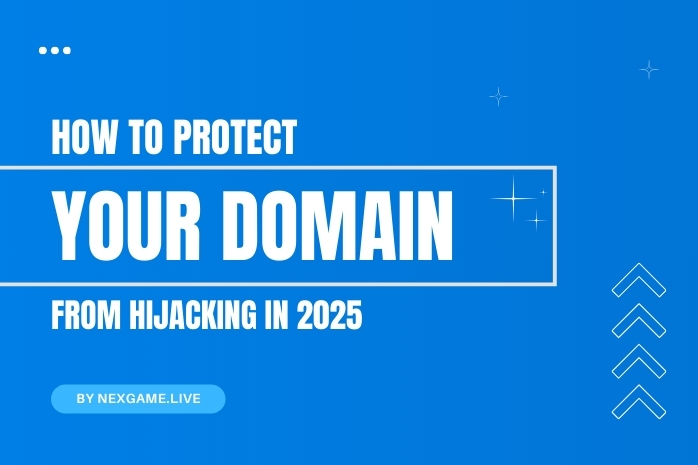How to Protect Your Domain From Hijacking in 2025 Published: 17 May, 2025

Domain hijacking is a serious threat that every website owner should be aware of in 2025. It occurs when someone maliciously takes control of your domain name without your permission, which can lead to loss of website access, damage to your brand reputation, and even financial losses.
Fortunately, with the right knowledge and tools, you can protect your domain and keep your online presence secure. In this post, we’ll cover what domain hijacking is, how it happens, and most importantly, the practical steps you can take to safeguard your domain in 2025.
What Is Domain Hijacking?
Domain hijacking means unauthorized transfer or control of your domain name. The attacker may change ownership details, DNS settings, or even redirect your website to harmful or spammy sites. Hijackers exploit vulnerabilities such as weak passwords, phishing scams, or insecure domain registrars.
The consequences are severe. Losing your domain could mean losing access to your website and email services, damaging trust with your customers, and suffering SEO setbacks.
Common Ways Domain Hijacking Happens
Understanding the methods attackers use helps you prevent hijacking:
-
Phishing Attacks: Fraudulent emails trick domain owners into revealing login credentials.
-
Weak Passwords: Easily guessable or reused passwords are vulnerable.
-
Domain Registrar Security Flaws: Some registrars have less robust security, making domains easier to hijack.
-
Expired Domains: If a domain expires, attackers can quickly register it.
-
Unsecured Email Accounts: If your email linked to domain registration is compromised, hackers can reset passwords.
How to Protect Your Domain in 2025
1. Use Strong, Unique Passwords and Enable Two-Factor Authentication
Always create strong passwords for your domain registrar and associated email accounts. Use a combination of letters, numbers, and symbols, and avoid reusing passwords from other sites. Most registrars now offer two-factor authentication (2FA)—enabling this adds an extra layer of security by requiring a second verification step during login.
2. Lock Your Domain
Many registrars provide a domain lock feature. When activated, it prevents unauthorized domain transfers. You can enable this lock through your domain control panel to stop unauthorized changes.
3. Keep Your Contact Information Updated
Domain registrars use your contact details for important notifications. If your email or phone number changes and you don’t update it, you might miss critical alerts about domain status or transfer requests.
4. Regularly Monitor Domain Status and WHOIS Records
Use tools like NexGame to monitor your domain’s WHOIS information and check for unexpected changes. Regular monitoring helps you spot suspicious activity early.
5. Renew Your Domain Before Expiry
Never let your domain expire. Set automatic renewals if possible and keep track of renewal dates. Expired domains are easy targets for hijackers.
6. Choose a Reputable Domain Registrar
Select a registrar with strong security measures, good customer support, and positive reviews. Avoid cheap or unknown registrars that might compromise your domain’s safety.
Conclusion
Domain hijacking is a real risk, but it can be managed with simple and effective practices. By securing your passwords, enabling 2FA, locking your domain, keeping your contact info current, monitoring regularly, and choosing a trusted registrar, you can protect your domain and ensure your website stays safe in 2025 and beyond.
Frequently Asked Questions
Q1: What is domain hijacking?
Domain hijacking is when someone takes control of your domain without your permission, often to misuse your website or damage your online presence.
Q2: How can I tell if my domain is hijacked?
Signs include sudden loss of website access, unexpected changes in domain details, or emails about transfer requests you didn’t initiate.
Q3: Can I recover a hijacked domain?
Recovery depends on how quickly you act and your registrar’s policies. It’s best to prevent hijacking through security measures.
Q4: What is domain locking?
Domain locking is a security feature that prevents unauthorized transfer of your domain to another registrar.
Q5: How often should I check my domain status?
Check your domain status and WHOIS records at least once a month or use automated monitoring tools like NexGame.